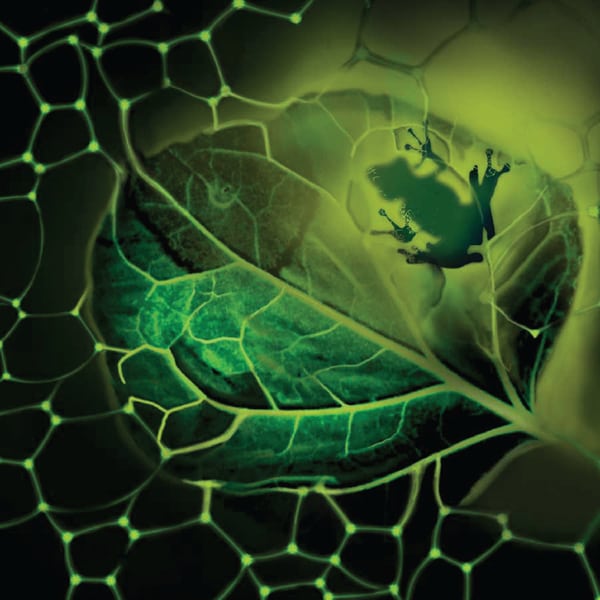Frog-Inspired Artificial Foam Could Help Trap CO2
In August, researchers from the University of Cincinnati who are working on creating an artificial foam that could absorb carbon dioxide (CO2) from the flue gas at power plants and convert it into biofuel won the grand prize at the 2010 Earth Awards in London.
Developed by Research Assistant Professor David Wendell, student Jacob Todd, and College of Engineering and Applied Science Dean Carlo Montemagno, the photosynthetic foam was inspired by the nest of the tungara frog, a South American species that creates long-lived foams for its developing tadpoles (Figure 6). The project actually uses plant, bacterial, frog, and fungal enzymes trapped within a foam housing to produce sugars from sunlight and CO2.
 |
| 6. Carbon-trapping foam. An artificial foam inspired by the long-lived foam nests made by the tungara frog for its tadpoles could effectively capture carbon dioxide from the flue gas at power plants and convert it into biofuel, researchers at the University of Cincinnati say. The project won the grand prize at the 2010 Earth Awards in August. Courtesy: University of Cincinnati |
As Montemagno explains, the new technology “presents a new pathway of harvesting solar energy to produce either oil or food with efficiencies that exceed other biosolar production methodologies. More broadly it establishes a mechanism for incorporating the functionality found in living systems into systems that we engineer and build.”
According to the researchers, foam was chosen because it can effectively concentrate the reactants but allow very good light and air penetration. Another advantage is that the foam does not shut down photosynthesis even in environments with too much CO2—as do most natural plant systems—because it employs a bacterial-based photo-capture strategy. “Our foam also uses no soil, so food production would not be interrupted, and it can be used in highly enriched carbon dioxide environments, like the exhaust from coal-burning power plants, unlike many natural photosynthetic systems,” Wendell said.
Panelists at the Earth Awards awarded $10,000 each to six finalists and $50,000 to Wendell and Montemagno, the artificial foam’s developers. The awards were set up in 2007 to spur “green” innovation and help designers take their products to market. The project was lauded as being an “efficient and versatile energy production platform, presenting new opportunities for developments in the field of renewable energy.”
The researchers say that the next step for the team will be “to try to make the technology feasible for large-scale applications like carbon capture at coal-burning power plants.” That will involve a strategy to extract both the lipid shell of the algae (used for biodiesel) and the cytoplasmic contents (the guts), and reusing these proteins in the foam. Wendell says, “We are also looking into other short carbon molecules we can make by altering the enzyme cocktail in the foam.”
—Sonal Patel is POWER’s senior writer.